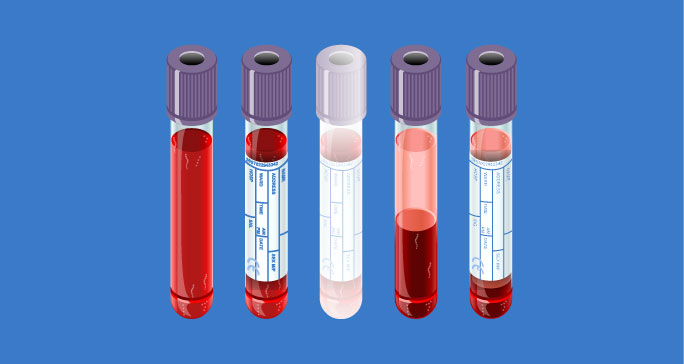- Diseases
- Acoustic Neuroma (14)
- Adrenal Gland Tumor (24)
- Anal Cancer (68)
- Anemia (2)
- Appendix Cancer (16)
- Bile Duct Cancer (26)
- Bladder Cancer (72)
- Brain Metastases (28)
- Brain Tumor (232)
- Breast Cancer (714)
- Breast Implant-Associated Anaplastic Large Cell Lymphoma (2)
- Cancer of Unknown Primary (4)
- Carcinoid Tumor (8)
- Cervical Cancer (158)
- Colon Cancer (166)
- Colorectal Cancer (118)
- Endocrine Tumor (4)
- Esophageal Cancer (44)
- Eye Cancer (36)
- Fallopian Tube Cancer (8)
- Germ Cell Tumor (4)
- Gestational Trophoblastic Disease (2)
- Head and Neck Cancer (12)
- Kidney Cancer (128)
- Leukemia (342)
- Liver Cancer (50)
- Lung Cancer (286)
- Lymphoma (278)
- Mesothelioma (14)
- Metastasis (30)
- Multiple Myeloma (100)
- Myelodysplastic Syndrome (60)
- Myeloproliferative Neoplasm (6)
- Neuroendocrine Tumors (16)
- Oral Cancer (100)
- Ovarian Cancer (172)
- Pancreatic Cancer (160)
- Parathyroid Disease (2)
- Penile Cancer (14)
- Pituitary Tumor (6)
- Prostate Cancer (146)
- Rectal Cancer (58)
- Renal Medullary Carcinoma (6)
- Salivary Gland Cancer (14)
- Sarcoma (238)
- Skin Cancer (296)
- Skull Base Tumors (56)
- Spinal Tumor (12)
- Stomach Cancer (64)
- Testicular Cancer (28)
- Throat Cancer (92)
- Thymoma (6)
- Thyroid Cancer (98)
- Tonsil Cancer (30)
- Uterine Cancer (80)
- Vaginal Cancer (16)
- Vulvar Cancer (20)
- Cancer Topic
- Adolescent and Young Adult Cancer Issues (20)
- Advance Care Planning (10)
- Biostatistics (2)
- Blood Donation (18)
- Bone Health (8)
- COVID-19 (362)
- Cancer Recurrence (120)
- Childhood Cancer Issues (120)
- Clinical Trials (632)
- Complementary Integrative Medicine (22)
- Cytogenetics (2)
- DNA Methylation (4)
- Diagnosis (232)
- Epigenetics (6)
- Fertility (62)
- Follow-up Guidelines (2)
- Health Disparities (14)
- Hereditary Cancer Syndromes (126)
- Immunology (18)
- Li-Fraumeni Syndrome (8)
- Mental Health (116)
- Molecular Diagnostics (8)
- Pain Management (62)
- Palliative Care (8)
- Pathology (10)
- Physical Therapy (18)
- Pregnancy (18)
- Prevention (918)
- Research (392)
- Second Opinion (74)
- Sexuality (16)
- Side Effects (604)
- Sleep Disorders (10)
- Stem Cell Transplantation Cellular Therapy (216)
- Support (402)
- Survivorship (322)
- Symptoms (182)
- Treatment (1786)
4 things to know about marginal zone lymphoma
BY Devon Carter
4 minute read | Published July 14, 2023
Medically Reviewed | Last reviewed by an MD Anderson Cancer Center medical professional on July 14, 2023
Lymphoma is often thought of as a cancer of lymph nodes, but it's actually a cancer of the lymphocytes. Lymphocytes are white blood cells that manage inflammation in the body.
Chronic inflammation can sometimes lead to a lymphoma known as marginal zone lymphoma.
Marginal zone lymphoma is a rare, slow-growing B-cell lymphoma. Because it’s so rare, marginal zone lymphoma is often treated like other subtypes of B-cell lymphomas, and new treatment options are often explored through clinical trials that group marginal zone lymphoma with other B-cell lymphoma subtypes.
But lymphoma expert Paolo Strati, M.D., and a team at MD Anderson has changed the treatment landscape for patients facing this rare diagnosis by conducting a practice-changing clinical trial. We spoke with him to find out what patients and caregivers should know about the disease, including symptoms and current treatments, as well as his team’s new research. Here’s what he shared.
1. Marginal zone lymphoma has three subtypes.
Marginal zone lymphoma is a rare type of non-Hodgkin lymphoma. It develops from chronic inflammation or because of a random error in DNA that leads to the creation of abnormal cells. It can be categorized into three subtypes:
- Extranodal marginal zone lymphoma of mucosa-associated lymphoid tissue – Often called MALT lymphoma, this subtype is found outside of the lymph nodes. It’s commonly found in the stomach, but it can also be found in the eyes, the bowels and the skin.
- Nodal – Nodal lymphoma is what often comes to mind when thinking of lymphoma, but it’s the second most common subtype. That’s because it’s found in the lymph nodes. It’s also more frequently studied since it’s easier to follow.
- Splenic – The rarest subtype of marginal zone lymphoma is splenic. It affects the spleen, an organ in the chest that is part of the immune system and helps filter blood.
Marginal zone lymphoma is also more commonly diagnosed in people over age 65.
2. Marginal zone lymphoma can grow for years before the first symptoms appear.
Because marginal zone lymphomas are slow-growing, it can take years for a patient to experience symptoms. That’s why it’s often discovered by chance when a patient has testing for another medical reason.
Although the splenic subtype affects the spleen, the cancer doesn’t show up as tumors in the organ. Instead, the spleen gets enlarged. With nodal marginal zone lymphoma, the lymph nodes become enlarged.
MALT lymphoma is different in that it tends to show up like inflammation. Patients may have discharge at the eye, so it’s thought to be conjunctivitis. Or, patients will have symptoms aligning with gastritis, which is when the stomach lining is inflamed. They’ll feel stomach pain or experience vomiting. Or, if it’s affecting the skin, the patient will have a rash.
3. Treatments can vary, depending on where you seek care.
30% to 40% of patients diagnosed with some MALT lymphomas see it clear away with antibiotics. Radiation therapy may be used for patients whose disease is more advanced and not responding to antibiotics.
Patients with splenic marginal zone lymphoma often receive a treatment type called biologics. An example is the monoclonal antibody rituximab.
Nodal marginal zone lymphoma is often treated like other B-cell lymphomas, so many patients receive chemotherapy. However, chemotherapy and its side effects can be very difficult for older patients.
Patients treated at specialized cancer centers like MD Anderson may receive chemotherapy-immunotherapy combination regimens like bendamustine and rituximab or R-CHOP. Or, they may receive immunotherapy with lenalidomide and rituximab, which we call R2.
Specialized cancer centers can also offer patients with relapsed disease another treatment option called BTK inhibitors. BTK is a receptor present in every B cell. It’s particularly overexpressed in lymphoma B cells, and it’s critical to their survival. BTK inhibitors are cancer drugs that target the BTK receptor to clear our abnormal B cells.
4. Better marginal zone lymphoma treatment options are now available, thanks to MD Anderson research.
When patients can access BTK inhibitors, they often receive a drug called ibrutinib. But it's not very specific in targeting the BTK receptor. It also targets other proteins, which can increase the risk of side effects, including bleeding, atrial fibrillation, high blood pressure, diarrhea and joint pain. Because of these challenges, many patients opt to switch to another treatment after several cycles.
For the last few years, MD Anderson has been leading a clinical trial to investigate treating marginal zone lymphoma with another BTK inhibitor called acalabrutinib. Compared with ibrutinib, the inhibition is specific to BTK and not spread across other proteins. Therefore, it’s more effective, and patients experience few side effects.
Because of the benefits to patients and the limited side effects, ibrutinib has been removed from the National Comprehensive Cancer Network treatment guidelines and acalabrutinib along with another BTK inhibitor called zanubrutinib has been added.
MD Anderson has really led this study. It's not just the principal investigator, but the study coordinators, the data coordinators, our regulatory people. It's been a team effort, and we’re incredibly proud to offer patients a more effective option with fewer side effects.
Request an appointment at MD Anderson online or by calling 1-866-609-3099.
Related Cancerwise Stories

We’re incredibly proud to offer patients a more effective option with fewer side effects.
Paolo Strati, M.D.
Physician & Researcher





